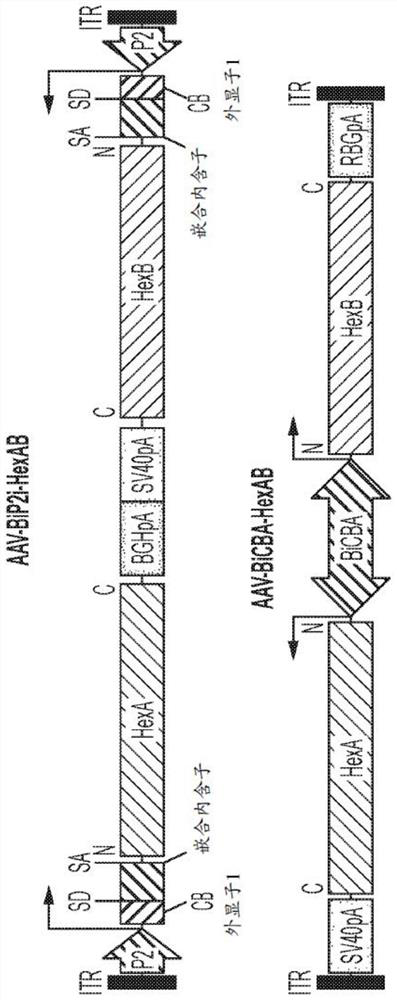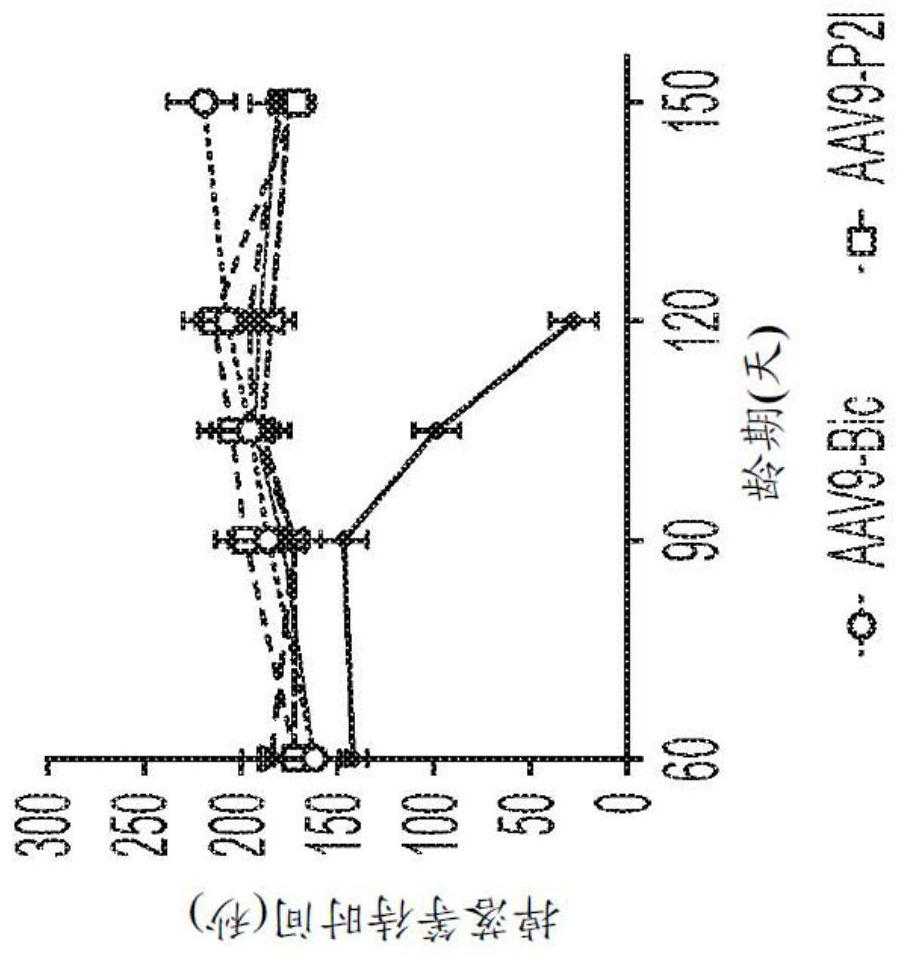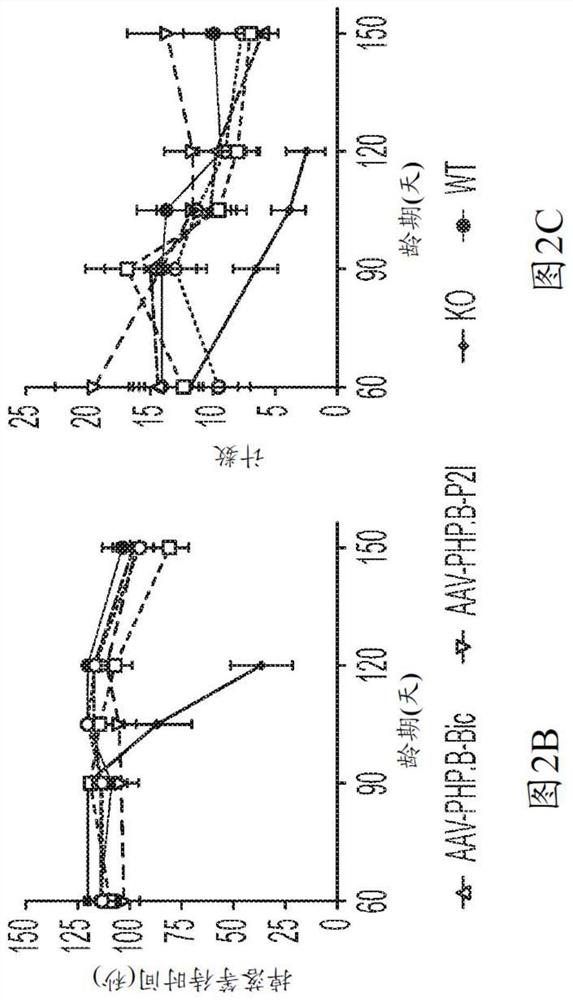Bicistronic aav vectors encoding hexosaminidase alpha and beta-subunits and uses thereof
A technology of hexosaminidase and encoding, applied in the field of bicistronic AAV vector encoding hexosaminidase alpha and beta subunits and its application
- Summary
- Abstract
- Description
- Claims
- Application Information
AI Technical Summary
Problems solved by technology
Method used
Image
Examples
Embodiment 1
[0127] Example 1: Behavioral performance of AAV-treated SD mice remains stable over time
[0128] Behavioral performance of AAV-treated SD and control (KO) mice was assessed at 60, 90, 105, 120 and 149 days of age using the rotarod and inverted screen tests. The motor coordination and performance of AAV-treated SD mice in accelerating rotarod ( Figure 2A ) and the inverted sieve test ( Figure 2B-2C ) test until the last time point of 149 days of age was still comparable to the normal control group. The performance of untreated SD mice declined over time and no animals survived at the last time point.
Embodiment 2
[0129] Example 2: Systemic AAV Treatment Reduces GM2 Ganglioside Content in the Whole Central Nervous System of SD Mice
[0130] 150-day-old AAV-treated SD mice (high dose) had significantly lower levels of GM2 gangliosides in the brain, cerebellum, brainstem, and spinal cord than untreated SD mice at the humane endpoint, and at AAV9-Bic and two AAV-PHP.B treatment groups were barely detected ( image 3 ). In AAV9-P2I-treated animals, GM2 levels remained above background.
Embodiment 3
[0131] Example 3: Increased hexosaminidase activity in the brain and liver of AAV-treated SD mice
[0132] Hexosaminidase activity in the cerebrum and cerebellum ( Figures 4A-4D) is consistent with the findings for GM2 ganglioside content. Enzyme activity in the brains of AAV9-P2I-treated mice was consistently lower than in the other groups, but despite this, restoration of about 10% of normal HexA activity appeared to be sufficient to significantly reduce GM2 ganglioside levels in the brain ( image 3 ). As in AAV9-Bic treated animals ( Figure 4A ), restoring HexA activity in the brain to about 20% appears to be sufficient to largely eliminate GM2 ganglioside storage ( image 3 ). Total hexosaminidase (HexA, HexB, HexS) activity in the liver was also assessed following systemic administration of AAV-PHP.Bic using the artificial substrate MUG ( Figure 5 ). In the liver, total hexosaminidase activity returned to 15% of normal.
PUM
| Property | Measurement | Unit |
|---|---|---|
| size | aaaaa | aaaaa |
Abstract
Description
Claims
Application Information
 Login to view more
Login to view more - R&D Engineer
- R&D Manager
- IP Professional
- Industry Leading Data Capabilities
- Powerful AI technology
- Patent DNA Extraction
Browse by: Latest US Patents, China's latest patents, Technical Efficacy Thesaurus, Application Domain, Technology Topic.
© 2024 PatSnap. All rights reserved.Legal|Privacy policy|Modern Slavery Act Transparency Statement|Sitemap



